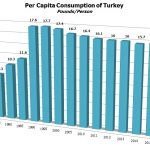The euro was already trading firmly before German GDP surprised to the upside, and the report helped lift the single currency through $1.17 for the first time ECB meeting in late October. The 0.8% quarterly expansion lifted the workday adjusted the year-over-year rate to 2.8% from a revised 2.3% in Q2, which is the fastest in six years.
Italian Q3 GDP was also firm at 0.5%, matching its best pace in seven years. The 1.8% year-over-year pace is also the best since 2011.

The euro was also boosted by cross rate demand after the softer than expected UK and Swedish inflation. The BOE’s preferred measure, CPIH was unchanged at 2.8%. Headline and core CPI was also unchanged at 3.0% and 2.7% respectively. The BOE and the market had expected a small rise. The unchanged report means that BOE Governor Carney does not have to write a letter to the Chancellor to explain the overshoot, which is not more than 1%. Although we expect UK inflation to peak here in Q4, it is not clear with today’s report that this is it. That fact that food prices rose 4.2% year-over-year, the most in four years, seems to still reflect the echo of sterling’s decline from last year.
Sterling is trading in the lower end of yesterday’s range and has been confined to about a quarter a cent on either side of $1.31. On the other hand, the euro has pushed a bit through GBP0.8950 to reach its best level since October 26.
Sweden also reported softer than expected October inflation. The 0.1% decline in October contrasts with expectations for a 0.1% increase. This, coupled with the base effect, saw the year-over-year rate fall to 1.7% from 2.1%. It is the slowest pace since June. The Riksbank has one of the most aggressive monetary policies, with deeply negative deposit rate (minus 1.25%) and repo rate (minus 50 bp) and QE. The euro has rallied to new highs for the year against the krona (~SEK9.8825). The euro had tested SEK9.71 on November 9 before staging an upside reversal. Last year’s peak (November 9) was near SEK10.08. This seems to be a bit far, but many short-term traders and medium-term investors may have been caught the wrong way, and the weekly technicals favor the euro.











Leave A Comment